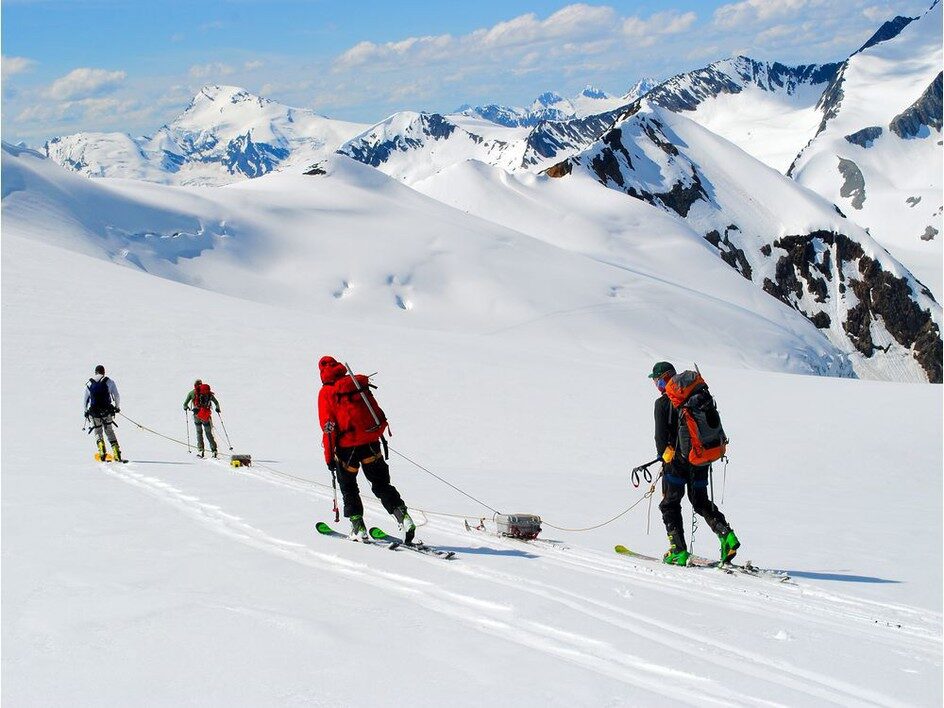
Lead author Ben Pelto and his colleagues skied cross country on the glaciers over 182 kilometres, pulling a sled-mounted ice-penetrating radar system to collect thousands of measurements.
They found the total volume of ice in the basin is roughly 122 cubic kilometres, or about 23 per cent more than computer modelling had estimated.
"I was surprised that the models were off by that much," said Pelto, who completed the work with support from the University of Victoria's Pacific Institute for Climate Solutions and from B.C. Hydro. "There are about 17,000 glaciers in B.C. and until now we only had ice measurements from a handful of them."
After three years of collecting data in the field, those knowledge gaps are starting to close and Pelto's cardiovascular fitness is likely well above average.
Previous estimates, based on computer modelling, used a variety of surface measurements to estimate the thickness and volume of glacier ice over very large areas, such as all of Western Canada or even the entire planet, so some variability is to be expected.
"Those models work pretty well in the absence of data, but you don't really know how thick the ice is until you measure it," he said.
The study — "Bias-corrected estimates of glacier thickness in the Columbia River Basin, Canada," published in the Journal of Glaciology — considers more than 34,000 data points in the Columbia Basin and two glaciers in the Rocky Mountains.
(Read more here)



Reader Comments